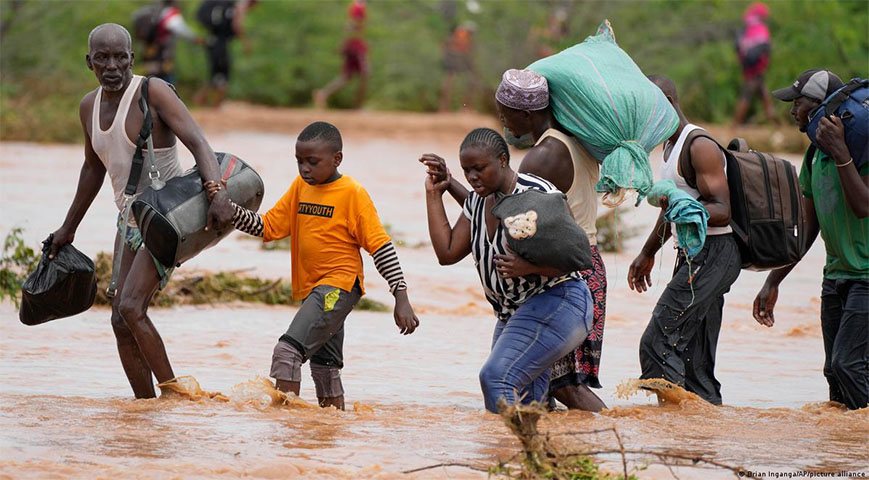At least 120 people have been killed, and property worth millions destroyed across the country due to the ongoing heavy rains and flooding.
More than 89,000 households have also been relocated and are housed in over 112 camps, according to top interior ministry official Raymond Omollo.

Kenya, Somalia, and Ethiopia are dealing with flash floods induced by excessive rainfall associated with the El Nino weather phenomenon after several months of severe floods.
The floods are increasing the region's humanitarian catastrophe, which has been exacerbated by the worst drought in four decades and has left millions of people starving.
Did you read this?
According to Omollo, four counties in eastern Kenya were the hardest hit, with another ten on high alert.
On Monday, Kenyan President William Ruto presided over an emergency cabinet meeting on the tragedy, promising to distribute billions of Kenyan shillings (millions of dollars) to impacted districts.
.jpeg)
In a statement issued following the meeting, his administration stated that 76 Kenyans had died and more than 35,000 households had been displaced.
"The above-normal precipitation, resulting from El Nino, has led to widespread flooding that has regrettably led to loss of lives, displacement of families, disease outbreaks, destruction of infrastructure and property, as well as prolonged power outages across Kenya and many parts of the Eastern Africa region," it said.
The Horn of Africa is one of the most vulnerable regions to climate change, and extreme weather events are becoming more frequent and intense.
In his address to the European Parliament last week, Ruto warned that Africa was "at the forefront of environmental vulnerability" before the commencement of the UN's COP28 climate summit in Dubai on Thursday.









